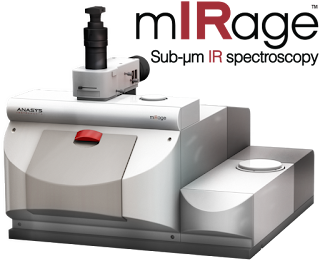Anasys Instruments of Santa Barbara, California, have come out with a brand new microscope which breaks the diffraction limit in order to provide, for the first time, and exclusively, the ability to provide submicron IR spectroscopy in a simple and efficient manner. This breakthrough will result in submicron IR spectroscopy and submicron IR Imaging to be used throughout a variety of applications for a great many sciences.
With its fast, easy, and optical non-contact technique, the power to go to the submicron level has been placed into the hands of more professionals than ever before thanks to this breakthrough from Anasys Instruments – and the gap between IR micro spectroscopy and nanoscale IR spectroscopy has been bridged accordingly thanks to the realms of possibility that this device can provide.
Anasys call this scientific breakthrough the mIRage – and there are a number in supply through their trusted distributors worldwide. Some of the disciplines that stand to gain from this technique being brought to them via the mIRage IR Microscope are as follows.
- Polymer materials research – the mIRage IR microscope has proven effectivity on thin multilayer food packing materials. For the first time, the submicron IR characterisation of thin multilayer films can be analysed without sample preparation, and with a far increased data turnaround.
- Life Sciences – The mIRage IR microscope has been utilised by a number of researchers worldwide in order to provide conclusions in protein secondary structures. This research involving the spectra of Josephin proteins before their incubation has proved to be groundbreaking, and has helped a number of laboratories understand just how varying disease is formed. Furthermore, the mIRage builds on Anasys’ advancements in AFM-IR spectroscopy of tissue, bone, wood, biomaterial, biomineral and much more.
- Pharmaceutical Industry – The mIRage allows the researcher to study the phase separation in active pharmaceutical ingredients with a far greater degree of simplicity and accuracy than ever before. Moving to the submicron level allows the researcher to also examine and identify phase separation of polyvinylpyrrolidone demains in a dextran matrix.
In order to obtain more information about this breakthrough product, contact Scanwel, UK and Ireland distributor of Anasys Instruments, as well as notable supplier and manufacturer of custom fabrications for the fields of academia and the sciences.

Comments
Post a Comment